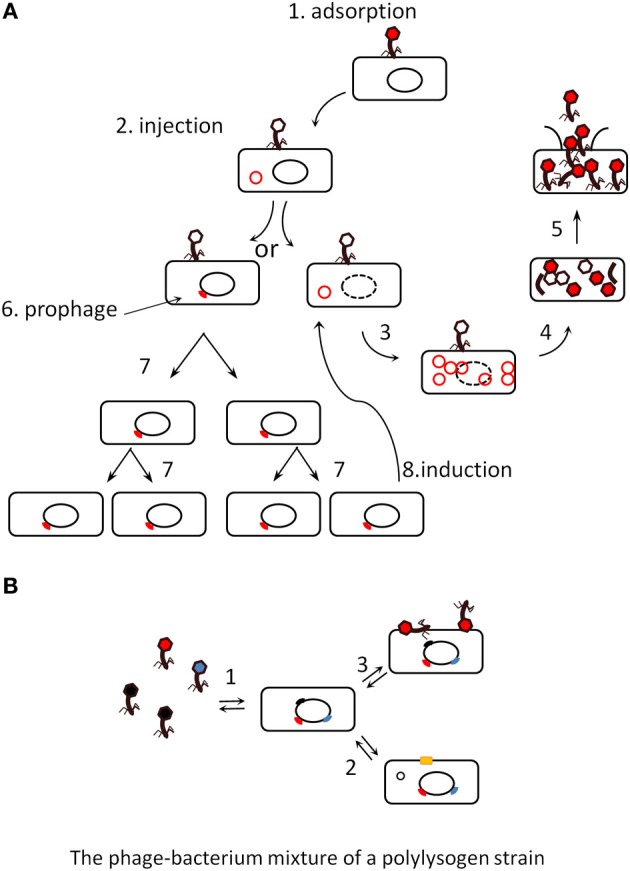Figure 1.

(A) The lytic and lysogenic life cycles of phages (scheme taken from Dr Gary Kaiser, with permission). Virulent phages perform only lytic cycles (steps 1 to 5), they adsorb to the bacterial surface (1), inject their DNA (2), replicate it (3), produce capsid proteins that assemble together (4), and finally lyse their host (5). Temperate phages can proceed similarly or shift to a lysogenic cycle (6), where they enter a silent stage of prophage (usually integrated into the bacterial genome), and are replicated passively by the bacterial machinery (7). Either a rare stochastic event or a stress induces the prophage (8), which then comes back into a lytic cycle. (B). The various states of a poly-lysogen strain. Most bacterial strains are poly-lysogens, they host more than one prophage. As a consequence, a population may differentiate into various states: it can produce (1) background levels of virions, (2) excise some prophage and reveal a new phenotype by restoration of the gene interrupted by the prophage [producing for instance a surface protein, yellow square (Rabinovich et al., 2012)], (3) adsorb virions and use them as virulence factors (Mitchell et al., 2007).
